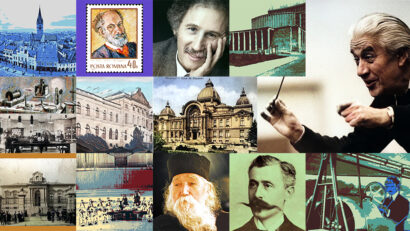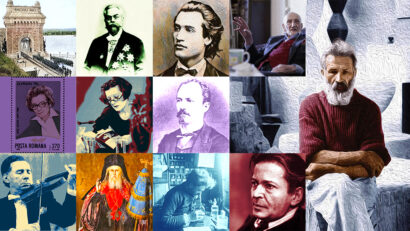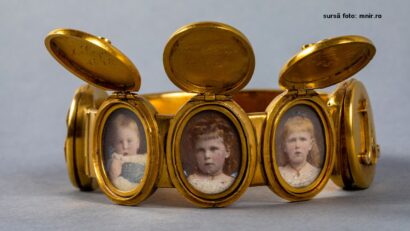Timișoara – an artistic city
Timișoara is one of the country’s most important commercial, historical and cultural centres.

Eugen Cojocariu and Ion Puican, 15.06.2025, 14:00
Timișoara, a city located in the west of Romania, near the borders with Hungary and Serbia, on the banks of the river Bega, is one of the country’s most important commercial, historical and cultural centres. It is the seat of Timiș county, of the Banat historical region, a geographical area laden with a complex and troubled history. The name of the city comes from that of river Timiș. After WWI, it became part of Romania. In 1989 it was the hotbed of the Romanian anti-communist revolution. This is one of the reasons the city attracts many foreign visitors, as tourist guide Alexandra Irimia explains:
“Foreigners are coming mainly for the revolution that broke out in Timișoara in 1989. It is becoming an increasingly popular destination from this point of view. Based on the example of the Berlin Wall, we are strongly promoting Timișoara from this angle. Romanian visitors coming here from other parts of the country are, in fact, interested, in better understanding what happened in the early days of the Revolution in Timișoara. Timișoara, on the other hand, has a lot to offer from a cultural point of view. Obviously there is the “legacy” of its being European cultural of culture in 2023, still very present, with the city full of cultural events. More and more buildings are opening, they are being renovated, some old ones are being opened to the public, so that they can also see them from the inside. The city has a large pedestrian area, it is pleasant. Just at a cafe outdoors, enjoying the sun on a day like this I think fills you with energy. Everything is peaceful, it is quiet. What more can anyone ask for? We have good food. We have parks, we have Bega river, a ride on the Bega, and parties on the water.”
Timișoara won the title of European Capital of Culture in 2023, a project that breathed new life into the city from a cultural and tourist point of view, especially in terms of international cultural tourism. The programme featured a number of outstanding events, such as the three-day marathon of events that opened the programme, including concerts, multimedia screenings, performances and exhibitions; the Light of the Union Festival – a visual and sound event featuring architectural screenings and installations; an exhibition dedicated to Victor Brauner, one of the most important figures of Romanian and international surrealism; and an exhibition entitled “Brâncuși: Romanian Sources and Universal Perspectives” – the first major retrospective in recent decades dedicated to the Romanian sculptor Constantin Brâncuși, a prominent figure in international art.
Timisoara is a place full of history. A mix of different cultures, influences and communities. The city stands out for its historical and cultural buildings and sites, including the Palace of Culture, the Maria Theresia Bastion, the Union Square, the Romanian Orthodox Metropolitan Cathedral, the Weisz Palace, the National Museum of Art and many others. Alexandra Irimia told us more about these places and the history of the city:
“We have a, let’s call it ‘visible’ history that dates back to the 18th century. There are also a few exceptions, buildings that date back to the Middle Ages. For the most part, however, beneath the ground we have the ruins, the foundations of medieval buildings, while the buildings that we still see standing are from the 18th century. Together, they all tell a story. The story of a troubled region of Banat, that has changed hands in time, being part of various different countries in the last 100 years. The region is today proud of multicultural and intercultural nature. The area of Banat is still home to many ethnic communities and the descendants of over fifteen ethnic communities. And Timișoara is a perfect demonstration of this multi, pluri and interculturality. So many different ethnic, religious communities, from the old Timisoara communities, which are the Romanians, the Serbs, the Hungarians, and the Germans, as well as the surrounding communities of Slovaks, Bulgarians, Ukrainians, etc. These things are still very much alive, very much present in our minds and still very present in the cultural projects that we carry out. Everything that we see, mostly dates back to the Habsburg period. There are also the ruins of a medieval mosque, built during the 164 years of Ottoman rule, which we find next to the ruins of a church and Jesuit monasteries from the 18th century, both in St. George’s Square. And these are visible ruins. The traces of other are marked on the pavement and are indicated by means of plaques, including Turkish baths, mosques, and cemeteries. Throughout the entire pedestrian area of Timisoara shows signs on the ground of different periods in the city’s history.”
Timișoara is the only city in Romania included by the American publication “Time” among the top tourist destinations in the world. It was designated the best city-break city in Europe in 2023. The legacy of the year in which it was the European Capital of Culture is visible not only in the modernised cultural infrastructure, but also in the continuous effervescence of the local artistic scene. Timișoara offers a unique mix of history, culture, innovation and hospitality.






























